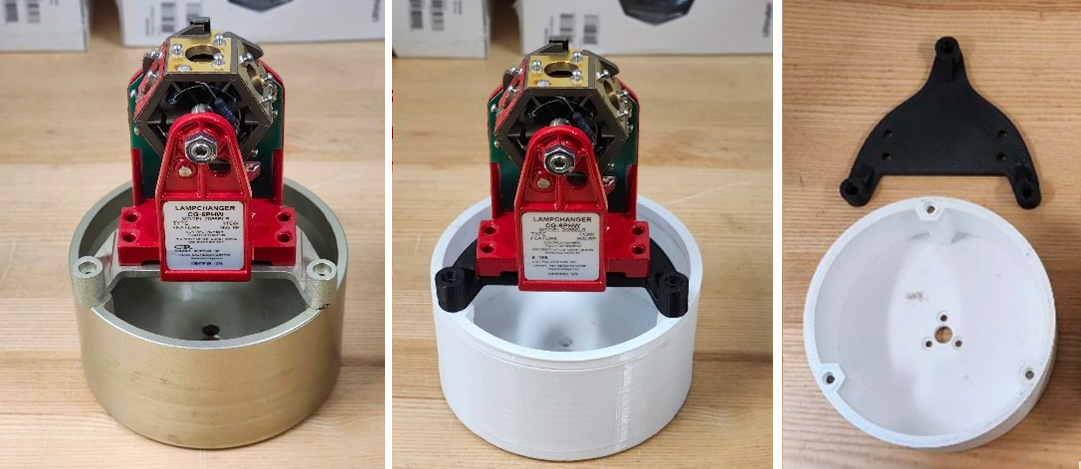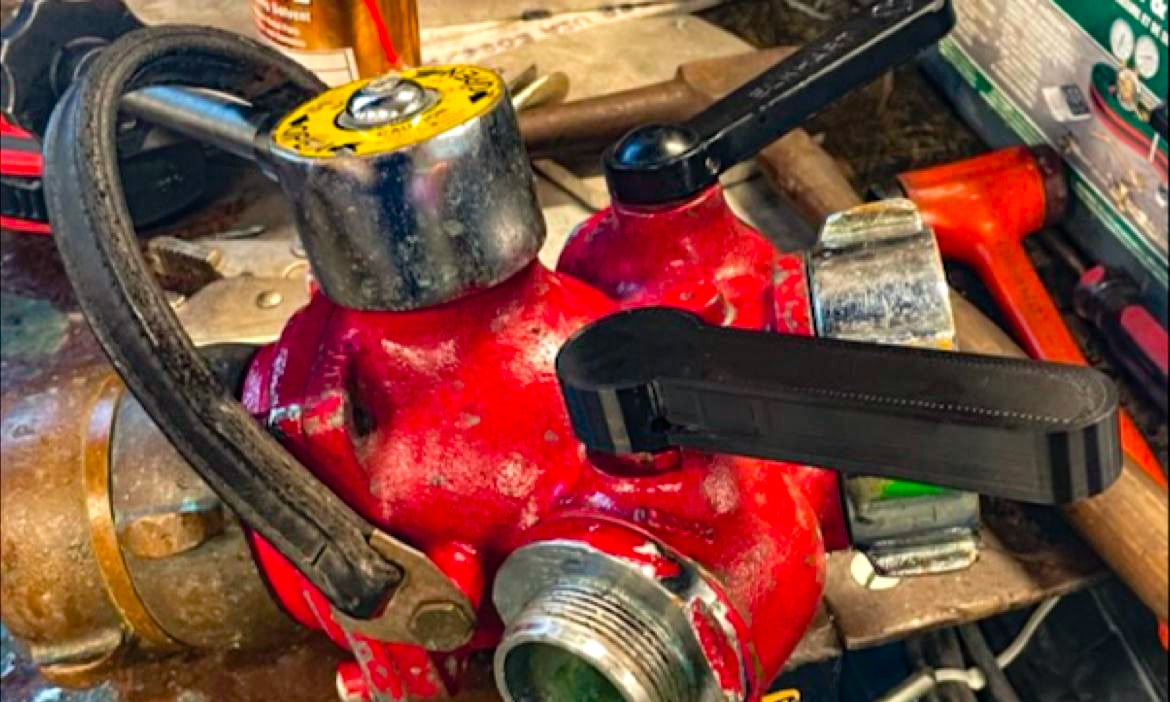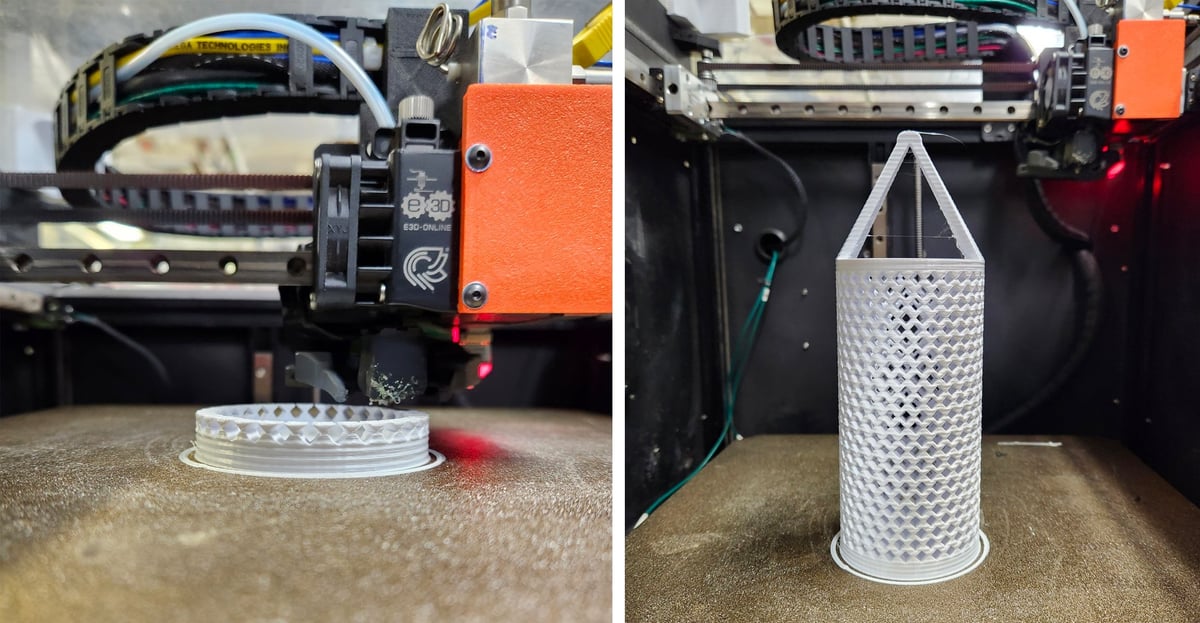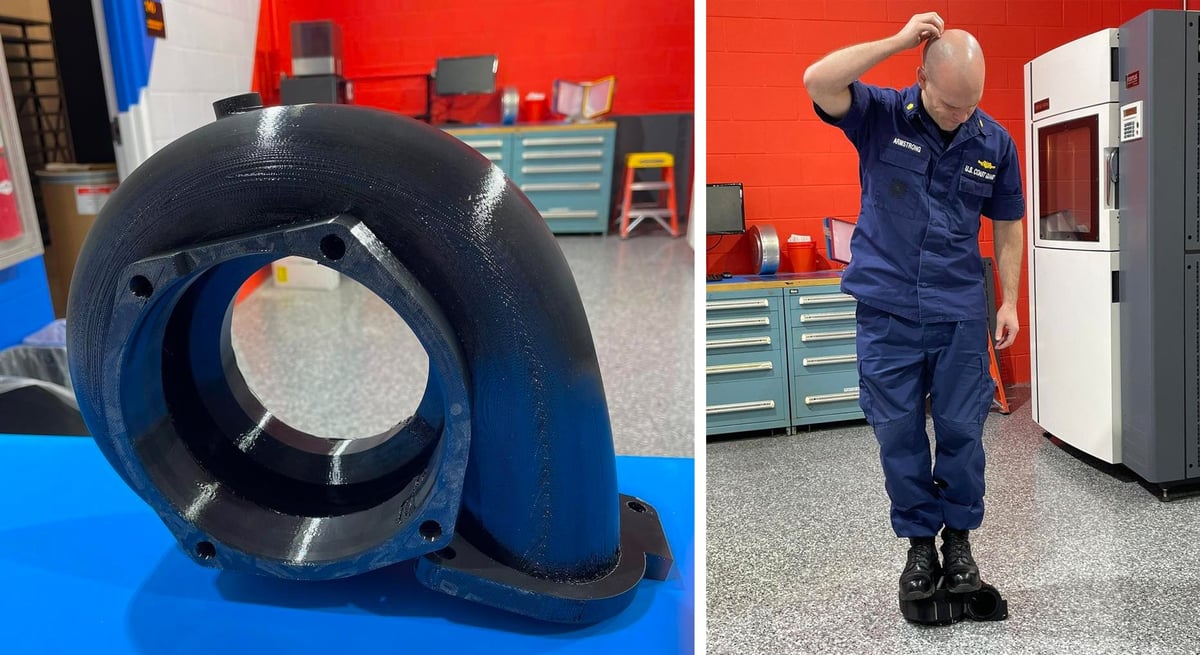In the last two years alone, 3D printing has saved the US Coast Guard’s Shore Infrastructure Logistics Center more than $650,000 in acquisition costs and put 164 repaired pieces of equipment back into inventory, according to the Coast Guard.
One recent project, detailed this week by the United States Coast Guard online, involves lighthouse beacon repairs. A program to modernize traditional lighthouses and replace the incandescent-bulb beacons with a more cost-effective and energy-efficient LED light, unfortunately failed. The new lighting proved confusing to civilian mariners and had high repair costs. The old beacons, which were moved to storage, had to be reinstalled, but many required repair parts that were no longer manufactured.

The base foundation for the beacon’s hanger plate (pictured above), for example, was one of the first parts replaced by in-house 3D printing at the Coast Guard’s facility. Coast Guard engineers reverse engineered the part to exact dimensions and then printed prototypes for verification and validation via analysis and destructive testing to ensure that the 3D printed parts could successfully replace the previous metal alloy parts. Once it was determined that the 3D printed parts were good for the use case, 18 were printed for installation.
Another installed 3D printed solution involved replacing the frequently failing handles on ship gate valves. New valve assemblies have a long lead time and cost around $400 each. Plus, the handles are not offered separately from the valve assembly, according to the Coast Guard, which estimates that 3D printed handles will cost under $10. The first 3D printed handle (shown below) was tested then installed in late 2023.

When the Coast Guard’s repair facility, C5ISC, risked failing an impending cyber-compliance inspection due to missing emergency shut-off switch covers, it printed them overnight instead of procuring the simple covers through regular orders and waiting for them to arrive.
In addition to cost and speed of production, the Coast Guard is also investigating replacing some metal components with polymer components to prevent corrosion. The latest iteration of a sea strainer basket 3D printed in plastic replaces the previous circular holes of the metal version with diamond-shaped ones so there’s no support structure required during 3D printing, which means a faster and cheaper print with no post processing.

Although 3D printing has been in use at the Coast Guard for many years, the organization is rapidly advancing its application of additive manufacturing.
The next big step is an experiment with a specialized printer currently on the Coast Guard Cutter Healy, the branch’s most advanced icebreaker and its largest vessel. This material extrusion printer is outfitted with a sophisticated sensor array to closely monitor the printer’s operation and movement at sea. This study aims to compare the same item printed at sea to parts printed at military bases in Palau and Qatar to learn how 3D printing is affected by the unique and often extreme environments in which the military operates.
“This information will be critical to the military additively manufacturing reliable parts wherever a unit is deployed,” the Coast Guard said on its Facebook page. The printer study is also helping to validate the theory of remote part production at sea. Lt. Cmdr. Andrew Armstrong, who leads the Coast Guard’s AM efforts for Cutters, and his team have been modeling parts at US Coast Guard Base New Orleans, and transmitting files to the chief scientist aboard the Healy in the Arctic for on-site production.
With several successful prints completed and more in the works, the Coast Guard is examining how this technology could help ships manufacture critical parts on demand, regardless of how far from the pier they are.

“AM can be used for rapid prototyping, part production, customization, form blocks, tool and jig creation, and more,” said Armstrong in a recent article posted at the US Naval Institute’s website. “While the Coast Guard still is relatively new to AM, it is confident in its aptitude thanks to motivated service members who pursue this technology on their own.”
To help better leverage 3D printing as a repair solution, the Coast Guard’s AM Working Group is sending personnel to a four-month industry training course and then six-weeks training with the Navy, the branch of the US Military that has implemented additive manufacturing the fullest. The Working Group is also on the lookout for unique and expensive aids and prototypes that could be 3D printed more economically, with some twenty to thirty parts under consideration, ranging from obsolete parts to low-risk parts, such as switchboard or radio knobs and breaker blanks.
Armstrong, who also co-chairs the Surface Fleet Additive Manufacturing Working Group, says the Coast Guard’s “comprehensive, technically rigorous, and nimble process to evaluate and validate each proposed use of 3D printing” will accelerate the use AM to solve logistics, maintenance, and underway habitability issues.
License: The text of "How 3D Printers Save the US Coast Guard Time, Money" by All3DP Pro is licensed under a Creative Commons Attribution 4.0 International License.